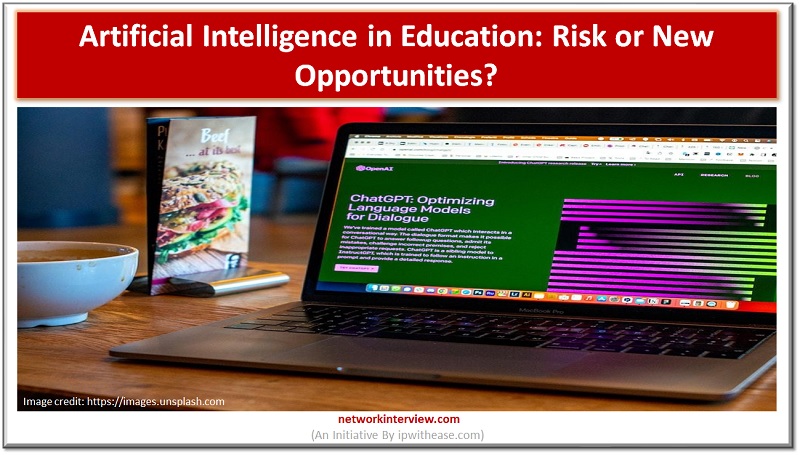
Artificial Intelligence in Education: Risk or New Opportunities?
Artificial intelligence is becoming so deeply intertwined with our lives. And slowly, it’s making his presence known in the field of education too. There is an increased need to move past the traditional ways of learning and teaching. Indeed, some techniques are still efficient today. However, the needs and expectations of students change from year to year. And as technology is contributing to this, we have to integrate technology into making teaching and education more attractive and immersing for students.
So, how is artificial intelligence being integrated into education? It comes with benefits, of course. But with risks too. To understand more about how artificial intelligence is shaping the educational landscape, continue reading this article. Let’s explore together both the opportunities and challenges it brings to education.
Artificial Intelligence in Education: Opportunities
- Personalized learning
- Efficiency and automation
- Quality education
Personalized Learning
As briefly mentioned above, artificial intelligence is already being integrated into education. And one of the greatest opportunities it comes with is personalized learning. Education is most effective when it is tailored to the needs of every student, their learning style, and abilities.
So, with the help of AI, as a teacher, you can adapt the pace of every lesson. You can design homework and an assignment to help students put to practice and learn especially the information that they might need more time to integrate. It is a great resource for students, as it can offer the university homework help they need. Having a personalized learning experience is exactly what students need and are looking for these days. They want an attractive and engaging one, and AI can easily do this.
Efficiency and Automation
But getting an education is not only about going to classes and completing assignments. It is also about taking tests and exams. This is something educators have to deal with constantly. And sometimes, it can take them a great deal of time. The time that they would otherwise spend preparing the lessons and learning more about alternative and engaging teaching methods.
So, AI can help automate some of these tasks. Grading or record keeping are just some of the tasks that can be automated by AI. This reduces the burden on teachers and improves the overall quality of education.
Quality Education
Another opportunity AI comes with is access to quality education. And here we can discuss more topics. For example, AI-powered platforms can provide education to remote or underserved areas. The world population would be helped by remote education. Which increases access to learning resources globally.
On top of this, AI offers insights driven by data. Educators can tap into discovering more about the strengths and weaknesses of students. Which, of course, helps them tailor their courses and lessons to address exactly these weaknesses and contribute to improving education. Which will lead to improved learning outcomes too. But there is another way AI is increasing the quality of education. AI-driven tools, such as chatbots or virtual assistants can engage students in interactive and immersing learning experiences. And education will be more enjoyable and effective.
Artificial Intelligence in Education: Risks
- Privacy concerns
- Depersonalization
- Bias and fairness
- Job displacement
Privacy Concerns
Just as with any other technological advancement, AI comes with some concerns for the public. The collection of student data for AI analysis raises these privacy concerns. This is why it is essential to ensure that this data is used and collected ethically. Breaches and misuse have to be avoided at all costs. Student data has to be kept safe and not made public, as it is personal and sensitive information.
Depersonalization
Even though AI can provide educators with data insights that turn out to be incredibly useful, overreliance on AI can lead to depersonalization. Indeed, as an educator, you can use the data provided by AI to tailor the information you deliver in class. But this does not mean that human-to-human interactions have no value anymore.
Bias and Fairness
We talk about technology, but this does not mean that we should not talk about bias and fairness. AI algorithms can inherit biases from the data they are trained on. For example, if historical data is presented, AI might unfairly disadvantage certain groups of students. Which will do nothing more than perpetuate inequalities in education. We live in a modern world where colleges and universities strive to offer students equal educational opportunities. No one says AI should not be used or integrated into education. However, we have to keep an eye out for these risks.
Job Displacement
This has been a hot topic in the last few years since AI tools and platforms have gained more and more momentum. As it becomes more and more powerful and performant, AI might indeed lead to job displacement. It could replace some educational roles, such as administrative tasks or basic tutoring.
Final Thoughts
AI is really powerful. Integrating it into education comes with both opportunities and risks. However, a few measures can be taken to harness its benefits and mitigate the risks it comes with. Implement algorithms that are designed to minimize bias. Make sure these algorithms are transparent and subject to auditing. Develop training for educators so that they learn how to better integrate it into education.
And maybe one of the most essential parts is to develop ethical guidelines and standards for AI in education. Emphasize responsible use and ethical decision-making. AI is helpful and powerful. Use it wisely.
Continue Reading:
Automation vs Artificial Intelligence
Data Science vs Artificial Intelligence



